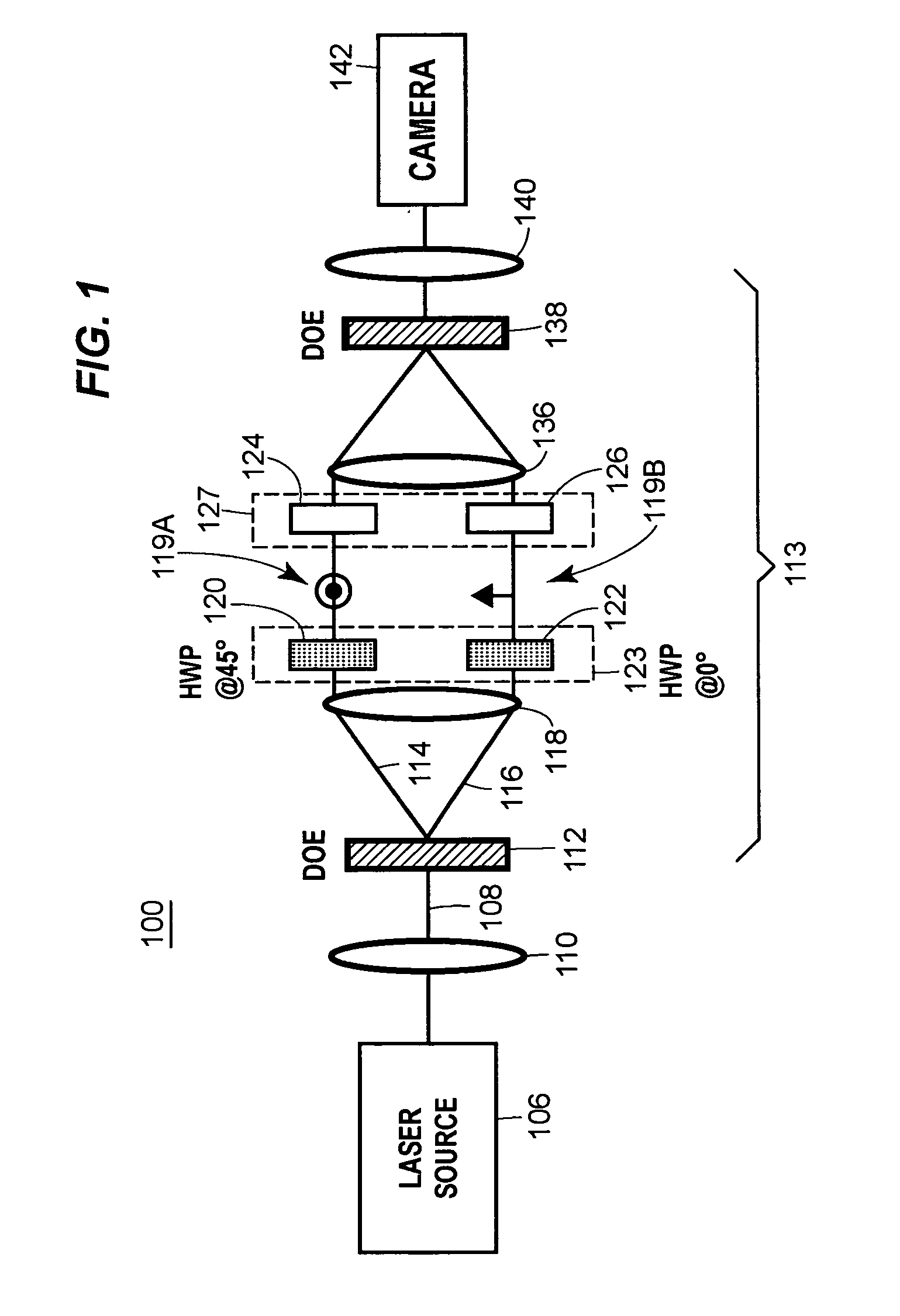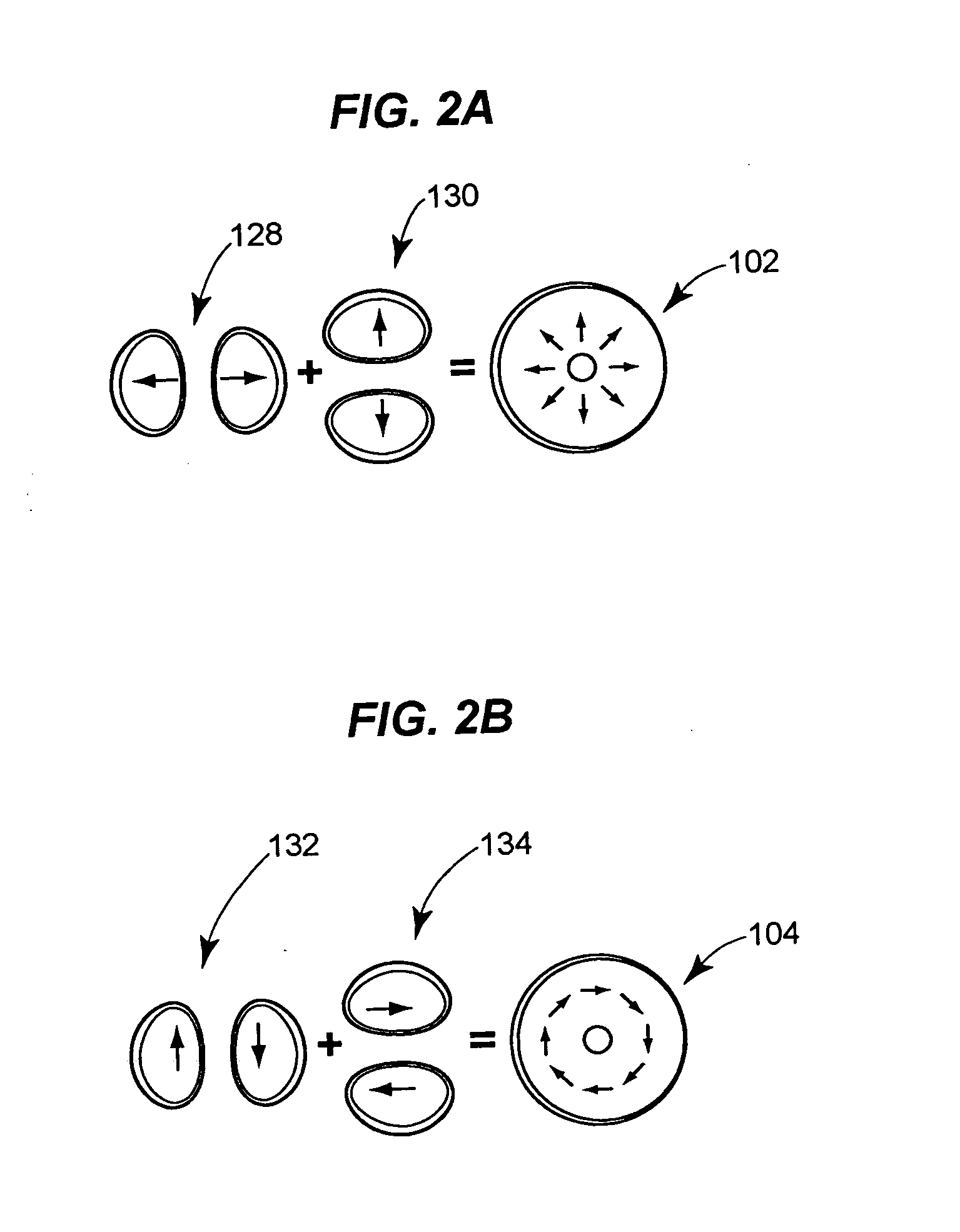Vector beam generator using a passively phase stable optical interferometer
a phase stable, beam-generating technology, applied in the direction of polarising elements, instruments, photomechanical equipment, etc., can solve the problems of difficult to achieve the same spatial resolution in the axial (or z-) direction, the focusing system is in general limited in its ability to focus light, and the effect is quite problematic, so as to achieve the effect of improving the point spread function
- Summary
- Abstract
- Description
- Claims
- Application Information
AI Technical Summary
Benefits of technology
Problems solved by technology
Method used
Image
Examples
example b
Field Applications
[0063] The vector beams once formed may be used in any number of applications, examples of which include microscopy, including multiphoton microscopy, laser writing, and as a laser tip probe. With azimuthally polarized beams focused using high-NA optics (e.g., 0.75 or higher, such as 0.75 to 1.65), a tightly-focused longitudinally polarized (AC) B-field can be acheived. This AC B-field may be converted to a DC B-field by way of optical rectification. Example applications using the DC magnetic field are numerous.
[0064] An example application is in magnetic storage applications, where the techniques may be used in computer hard drive applications. An azimuthally polarized focused beam, assisted by optical rectification, may produce the necessary B-field strength (coercivity) to read and / or write (in 1, 2, or 3-D through a multifocal, confocal, or holographic approach) into magnetic thin film hard drives. With the tight focusing of the B-field, especially along the ...
example e
Field Applications
[0068] An example application is in improving spatial resolution in microscopy (linear and nonlinear) especially using radially polarized light. Another example is in using the vector beam technique as the front end to generate the optical beam for all conventional linear, confocal, and nonlinear optical microscopes.
[0069] Yet another example is to use a vector beam (particularly radially polarized light) for super-resolution (e.g. 4-Pi) microscopy.
[0070] Another example is generating a longitudinally polarized beam at the focus of a microscope.
[0071] Another example is to generate optical beams with angular momentum.
[0072] Another example is in determining a three-dimensional orientation dipole moment of a single molecule. A z-polarized E-field may be used in conjunction with x- and y-polarized components to determine the absorption or emission dipole moment of the molecule. Measuring field emissions from dipole resonances along each of the component planes w...
example
[0080]FIG. 11 illustrates a focusing apparatus 700 that includes a vector beam generator 702 that may be implemented in accordance with the techniques described above. An output vector beam 704 is coupled to a focusing assembly formed of an objective lens 706, which may be a high-numerical aperture solid hemispherical or other lens or collection of lens elements. In the illustrated example, the vector beam 704 is focused to a focus region 708 in an affected substrate layer 710 on a substrate layer 712. The affected layer 710 may represent an electromagnetically responsive layer, such as a magnetic storage medium that is alterable in response to the application of a magnetic field (B-field). More generally, the layer may represent any magnetic field response material including materials with excitable magnetic dipoles transitionable with high spatial resolution In the example of an azimuthally polarized vector beam 704 (assisted by optical rectification) and a magnetic storage medium...
PUM
 Login to View More
Login to View More Abstract
Description
Claims
Application Information
 Login to View More
Login to View More - R&D
- Intellectual Property
- Life Sciences
- Materials
- Tech Scout
- Unparalleled Data Quality
- Higher Quality Content
- 60% Fewer Hallucinations
Browse by: Latest US Patents, China's latest patents, Technical Efficacy Thesaurus, Application Domain, Technology Topic, Popular Technical Reports.
© 2025 PatSnap. All rights reserved.Legal|Privacy policy|Modern Slavery Act Transparency Statement|Sitemap|About US| Contact US: help@patsnap.com



